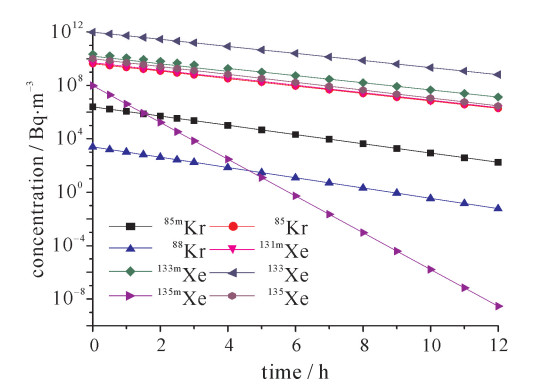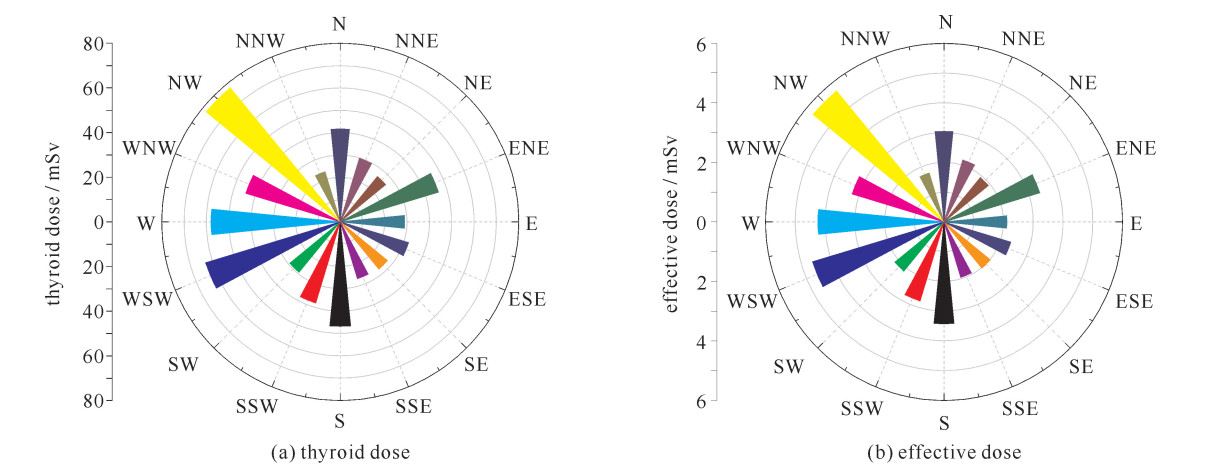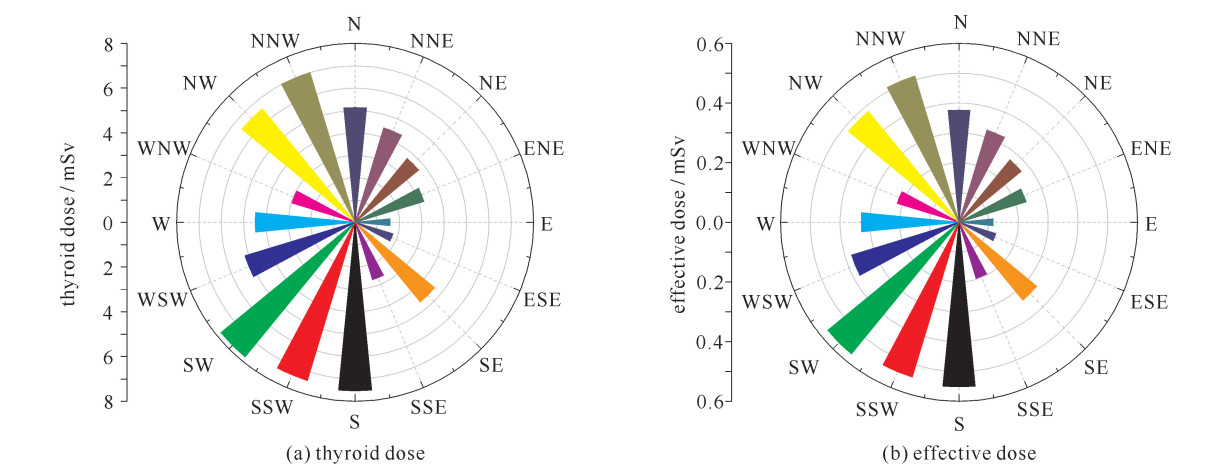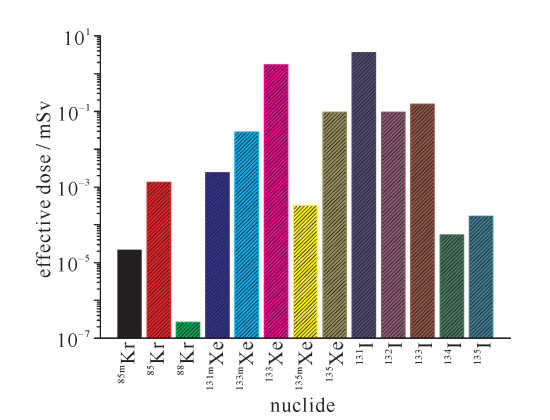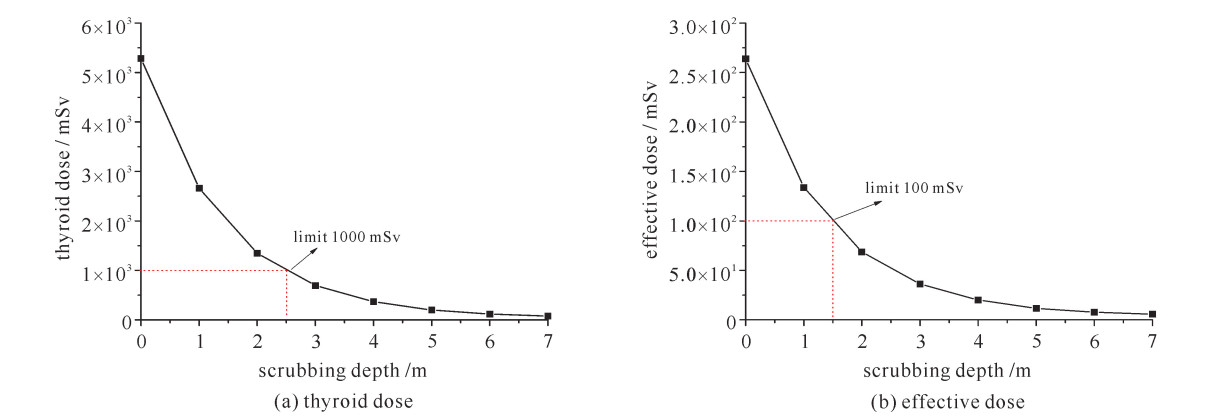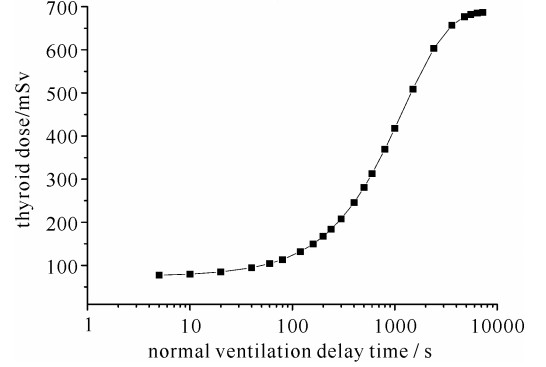Radiation impact quantification analysis for fuel handing accident
-
摘要: 以红沿河核电厂为对象,开展了CPR1000燃料操作事故放射性核素的来源、迁移途径、释放方式研究,构建了燃料存储室以及外环境的源项计算模型。在此基础上,定量地论证了该事故所产生的辐射影响,结果表明:基于前0.5%概率水平的厂址气象条件,得到非居住区边界以及规划限制区外边界16个标准方位的公众剂量均可满足GB 6249-2011限值要求,且尚存一定裕量。通过关键参数的敏感性分析,进一步识别出了剂量最大方位、主导核素、关键时段,论证了事故分析截断时间取12 h的合理性、燃料操作起始时间取100 h的必要性。同时,进一步研究了水洗深度及正常通风隔离时间对公众剂量的影响规律,公众剂量随水洗深度增加呈指数降低趋势,随正常通风隔离延迟时间变长而快速增加,相关研究可为各核电厂设计决策提供支持。Abstract: Based on Hongyanhe nuclear power plant, research on radionuclide source, transfer and release pathways were carried out, for CPR1000 fuel handing accident. The source term analytical models were constructed, including fuel reserve room and environment. On this basis, the radiation impact of an assembly drop accident was quantitatively estimated. The results show that public doses with 16 directions of exclusion area boundary and planning restricted area outer boundary satisfied the GB6249-2011 dose limits with some margin. The above doses were determined using top 0.5% meteorology. By sensitivity analysis of key parameters, direction of the largest dose, predominant nuclide and key time period were identified. Furthermore, the rationality of accident cutoff time taken as 12 h, and the necessity of fuel operation starting time taken as 100 h were proved. Meanwhile, the effects of scrubbing depth and normal ventilation isolation delay time on public doses were studied. The results show that public dose decreased exponentially with the increase of scrubbing depth, while it increased rapidly with the extension of normal ventilation isolation delay time, which can support the decision of nuclear power plant design.
-
Key words:
- fuel handling accident /
- source term /
- radiation impact /
- public doses /
- cutoff time
-
表 1 计算燃料操作事故(FHA)源项相关参数
Table 1. Fuel handling accident(FHA) source term calculation parameters
spent fuel storage area volume/ m3 fission product fraction in gap/% chemical form proportion/% decontamination factor ventilation flow/(m3·h-1) ventilation efficiency/% release duration/h 85Kr other nuclide element iodine organic iodine element iodine organic iodine and noble gas element iodine organic iodine 5600 30 10 99.75 0.25 133 1 3600 90 70 12 表 2 燃料组件内核素积存量
Table 2. Fuel assembly inventory
nuclide activity/GBq nuclide activity/GBq nuclide activity/GBq 85m Kr 4.73×101 133Xe 4.90×107 132I 1.92×107 85Kr 2.42×105 135m Xe 2.71×103 133I 4.21×106 88Kr 1.40×10-1 135Xe 3.81×105 134I 1.75×104 131m Xe 2.83×105 131I 2.03×107 134I 1.69×104 133m Xe 8.88×105 -
[1] GB6249-2011, 核动力厂环境辐射防护规定[S].GB6249-2011. Regulations for environmental radiation protection of nuclear power plant [2] RG1.183-2000, Alternative radiological source terms for evaluating design basis accidents at nuclear power reactors[S]. [3] RG1.195-2003, Methods and assumptions for evaluating radiological consequences of design basis accidents at light-water nuclear power reactors[S]. [4] 卢玉楷. 简明放射性同位素应用手册[M]. 上海: 上海科学普及出版社, 2001: 287-291.Lu Yukai. Concise application manual of radioisotopes. Shanghai: Shanghai Popular Science Press, 2001: 287-291 [5] 孙大威, 梅其良, 付亚茹, 等. 基于AST方法的AP1000失水事故放射性后果评价[J]. 核科学与工程, 2016, 36(1): 103-108. https://www.cnki.com.cn/Article/CJFDTOTAL-HKXY201601015.htmSun Dawei, Mei Qiliang, Fu Yaru, et al. AP1000 loss of coolant accident radiological consequence assessment based on AST method. Nuclear Science and Engineering, 2016, 36(1): 103-108 https://www.cnki.com.cn/Article/CJFDTOTAL-HKXY201601015.htm [6] Burley G. Evaluation of fission product release and transport[R]. Washington: Radiological Safety Branch Division of Reactor Licensing, 1971. [7] RG1.25-1972, Assumptions used for evaluating the potential radiological consequences of a fuel handling accident in the fuel handling and storage facility for boiling and pressurized water reactors[S]. -




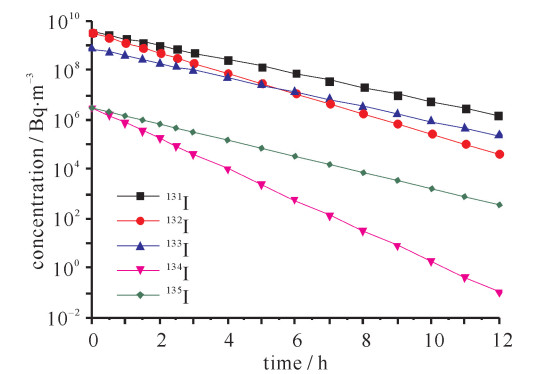
 下载:
下载:
